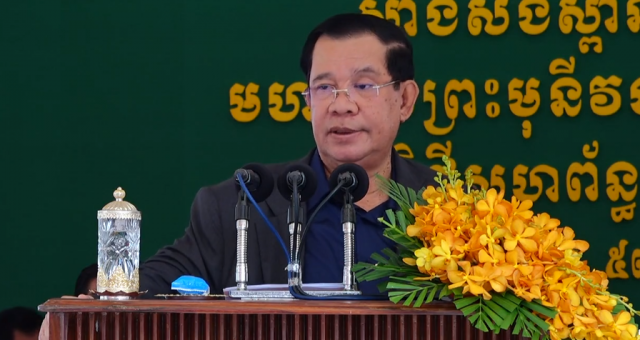Angkor Wat Naga Handrails Restored

- By Zul Rorvy
- November 28, 2023 2:00 PM
SIEM REAP – Restoration of Angkor Wat’s southern Naga handrail and terrace will be completed this month after loose soil and excess water over hundreds of years wreaked havoc with the structure. ThmeyThmey News journalist Zul Rorvy interviews Soy Sophearin, a technical officer of the APSARA National Authority's Department of Conservation of Monuments and Preventive Archaeology.
_1701140193.png)
Zul Rorvy: What kind of damage did the Naga handrail and its foundation sustain?
Soy Sophearin: The restoration is divided into a number of stages. In 1908, French archaeological reports show that this area was entirely covered in dirt. Henri Marchal, a French expert who worked tremendously on Cambodia archaeology, restored some parts.
The foundation had crumbled and stones were split. The drainage system was choked by dirt and rocks, causing water to clog and escape incorrectly. As you can see here, the inner layer of the structure is made from compact soil and laterite stones. When excess water gets in, it flushes away the compact soil making the terrace no longer stable to bear the weight of the Naga handrail.
So, before we could fix the handrail, we needed to take everything apart and restore the foundation. Block of stone were carefully evacuated and numbered. Then we could dig away the bad soil.
_1701140229.png)
Zul Rorvy: What does “bad soil” refer to?
Soy Sophearin: Bad soil here means soil that is not original. This is not the compact soil that should maintain the weight of the structure. This was soil carried in from the outside by excess water. That is why we need to introduce new compact soil with the right composition to strengthen the structure once more. At the same time, we can see two new blocks of stone here. Since the older stones are too weak to be used, we need replacements. During the process, we also restored the ancient drainage system to keep the structure safe from incorrect flow of water.
The handrail also needed disassembly. Its foundation needed to be realigned as did the handrail columns. If the realignment is off, the structure will become unstable. Modern methods were also used to make sure that the restoration can last a long time.
_1701140255.png)
Zul Rorvy: Why is this segment of the handrail completely new?
Soy Sophearin: The original handrail of this section is nowhere to be seen. Experts from ICC-Angkor (International Coordinating Committee of Angkor) allowed a replacement to be made. Chiselling the stones into this complex geometry is not straightforward. A significantly bigger stone was needed to get this desired shape. The new stone has to be distinguishable from the old stone as well so that people can clearly differentiate them. This stage took us around four months.
_1701140283.png)
Zul Rorvy: What were some of the challenges?
Soy Sophearin: First of all, these stones are bulky and heavy. Second, realignment demands a lot of effort to get right. We have to do it one section at a time. Sometimes, new stones and old stones do not fit nicely together. Third, our colleagues have to work mostly outdoors while facing the elements.
_1701140304.png)
_1701140336.png)
Conducted in Khmer for ThmeyThmey News, this story was translated by Ky Chamna for Cambodianess News.
To watch the story in Khmer, click here.















